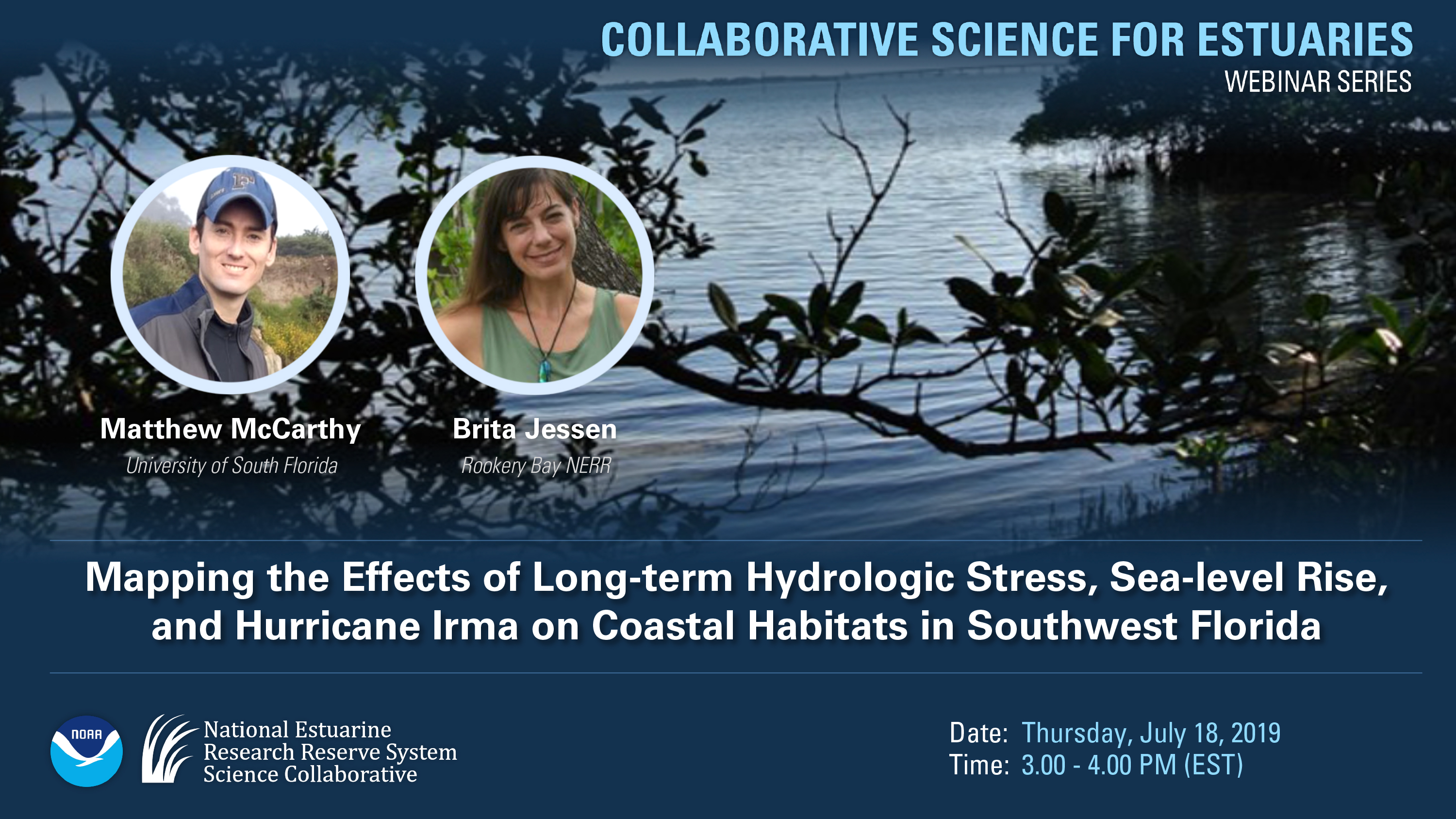 Webinar Description
Webinar Description
Hurricane Irma made landfall in southwest Florida within the Rookery Bay National Estuarine Research Reserve in September of 2017 as a Category 3 storm with winds in excess of 115 mph. For some areas within the reserve, the impact of the storm compounded the stress caused by decades of human development and changes to water flow patterns. Managers of the reserve want to better understand the synergistic effects of chronic stress from human modification or other drivers (e.g., sea level rise) and acute impacts from Hurricane Irma. One approach is to measure habitat structure and change in the time preceding and following the major storm event.
This webinar described the use of advanced satellite imagery to map the damage, death, and recovery of mangroves with a time series of images from 2010 to 2018. Dr. Matt McCarthy shared the methods used to map the landscape and evaluate change. Dr. Brita Jessen provided background for the study and discussed the management implications for the reserve and other coastal areas. Matt and Brita have been collaborating on a one year-year catalyst project that has relevance to coastal land managers interested in mapping habitat change.
Webinar Summary Products
- Webinar Recording (YouTube)
- Speaker Bios (Webinar Page)
- Webinar Brief (PDF)